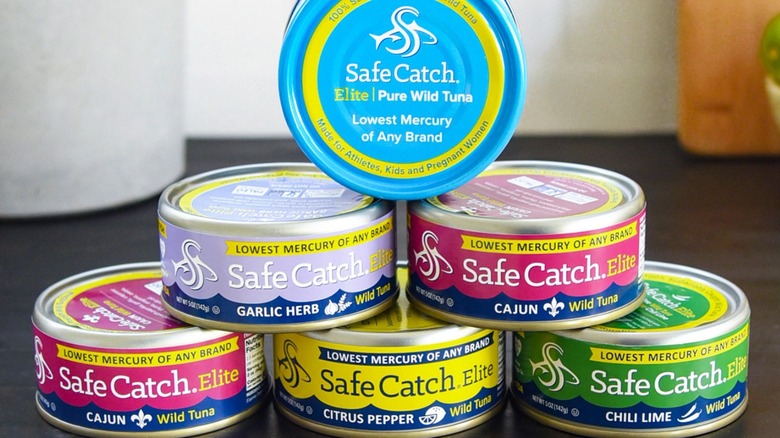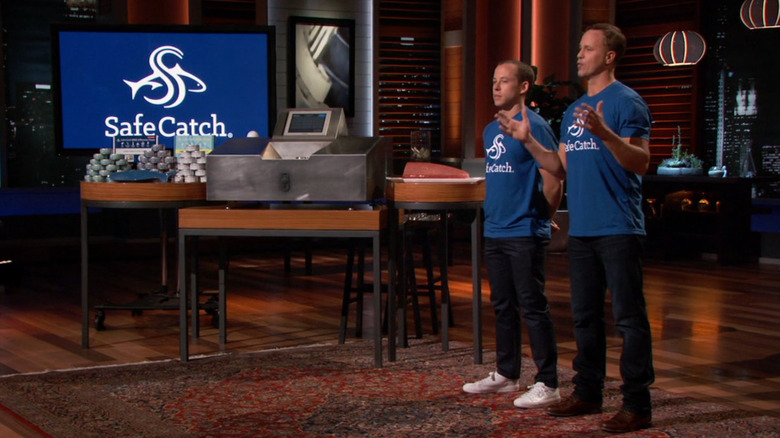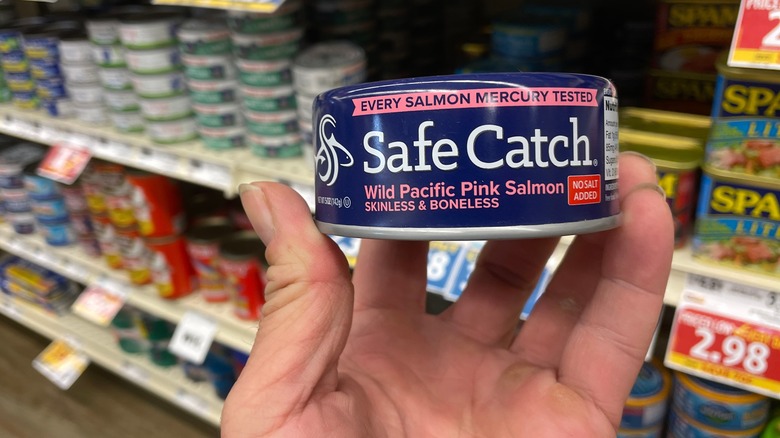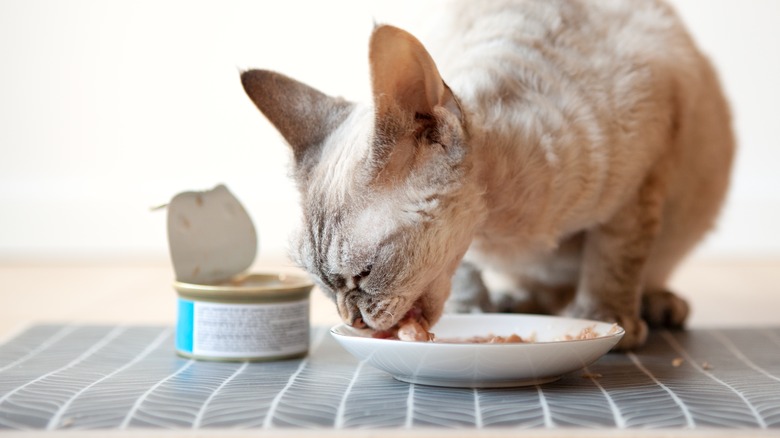What Happened To Safe Catch After Shark Tank?
In 2004, the F.D.A. suggested that young children and pregnant or nursing people limit their canned tuna consumption due to concerns about its high mercury levels. The agency claimed this neurotoxin can have negative effects on developing fetuses and growing children. Not long after, the concern surrounding mercury content in fish became a reality for Sean Wittenberg and his family when, as he relayed to Pacific Sun, his mother developed mercury poisoning from eating canned tuna. This prompted Wittenberg and his father to develop a mercury-testing device, but although they shopped it around to multiple fish processing companies, no one was biting.
Eventually, Wittenberg's friend Bryan Boches stepped in and proposed that they launch their own canned tuna brand. Together, they began marketing Safe Catch, a sustainable canned tuna that's free of preservatives and low in mercury.
According to the company's website, every fish that eventually makes its way into a Safe Catch can is tested, ensuring a substantially stricter mercury limit than that set by the F.D.A. The company also claims that by cooking the fish only after it's canned, its tuna tastes better and is more nutritious than its competitors. After seeing some success as an online retailer and eventually landing their product on Wegmans' shelves, Wittenberg and Boches took their tuna to "Shark Tank" in hopes that a hungry Shark might take the bait.
What happened to Safe Catch on Shark Tank?
Sean Wittenberg and Bryan Boches auditioned for "Shark Tank" in 2016 via video submission after one of the show's producers expressed interest in their product. Perhaps that bit of encouragement is what gave them the confidence to ask the show's star-studded investment panel for $600,000 in exchange for 3% equity in their company. Initially, the Sharks liked how the product tasted, and after learning that each can retailed between $3 and $4 but only cost $1.20 to make, it seemed as though all of them were on board. The segment took a turn, however, after Wittenberg and Boches dove deeper into financial details.
The co-founders revealed that in 10 years of business, they had acquired $14 million from investors, every dollar of which went toward developing their proprietary mercury-screening technology. After the money ran out, investors began losing confidence, and the duo bought them out for just under $1 million. Unfortunately, as Boches told the Sharks, even after pouring nearly $1 million of his own money into the business, Safe Catch was still $900,000 in debt. Despite racking up $1.25 million in sales in the first year since Wittenberg and Boches bought out their investors, maintaining operations was costing the company $75,000 each month. Upon hearing this, the Sharks pulled out one by one, citing concerns about overvaluation and the potential lack of return. Ultimately, Safe Catch's co-founders walked away with nothing.
Safe Catch after Shark Tank
At the start of 2018 — just two years after Wittenberg and Boches' "Shark Tank" appearance — Safe Catch landed $5 million of seed funding, which it used to launch a new line of products, including seasoned tuna pouches, canned Ahi tuna, and both pouched and canned salmon. That same year, the new products scored some invaluable free marketing when musician Nick Jonas posted an Instagram story sharing his Safe Catch Chili Lime tuna recipe with his 14.5 million followers. By June 2018, Safe Catch's Whole 30- and Paleo-friendly tuna pouches could be found at Kroger, and Boches told Deli Market News that, "Millennials seeking healthier and better tasting food have made Safe Catch tuna the fastest growing tuna brand in the U.S."
It wasn't all smooth sailing for Wittenberg and Boches, however. In 2021, the National Advertising Division of the Better Business Bureau assessed the validity of Safe Catch's assertions about its products. The N.A.D. determined that many were valid, including those specifying that Safe Catch tuna is 100% sustainably caught and has the lowest mercury limit of any canned tuna brand. However, the N.A.D. also found that other statements made by the company, such as those aligning the brand with recommendations from the medical community, were misleading. Despite the company's "respectful" disagreement with the ruling, Safe Catch vowed to adhere to the N.A.D.'s guidelines moving forward (via SeafoodSource).
Where is Safe Catch now, and what's next?
Despite the controversy surrounding the N.A.D.'s ruling, Safe Catch has not only remained in business but has managed to expand since its "Shark Tank" appearance. In October 2022, the sustainable seafood brand secured a spot on the shelves of 1,500 Walmart stores across the country. As such, you can now purchase Safe Catch's products in over 12,000 stores nationwide at stores such as Kroger, Publix, Wegman's, H-E-B, and Harris Teeter, as well as on digital platforms like Amazon, Thrive Market, and Safe Catch's website.
Several Safe Catch products have also received a stamp of approval from popular diet programs like Whole 30 and Paleo, leading to a boost in recognition. Early in 2022, Safe Catch received a certification from the Marine Stewardship Council (M.S.C.), and the brand's canned tuna has even been named the official canned tuna of the American Pregnancy Association.
Also in 2022, Wittenberg and Boches launched a premium-grade cat food brand called Pure Cravings, and in July 2023, the brand released a new line of mercury-tested wet food. Because the tuna used in Pure Cravings cat food is sustainably caught and mercury-tested, the human-grade pet food won Best in Show in the Cat Category of the New Product Showcase Awards at the 2022 Global Pet Expo.



